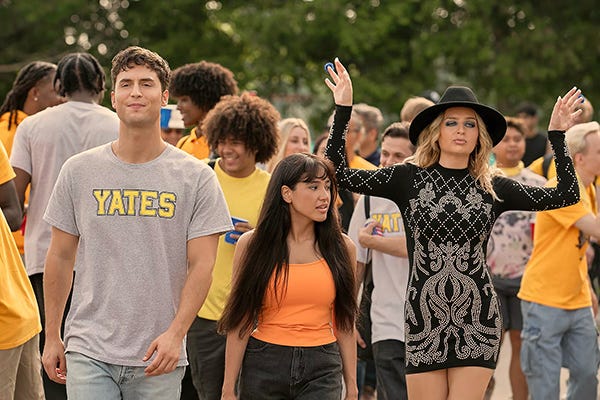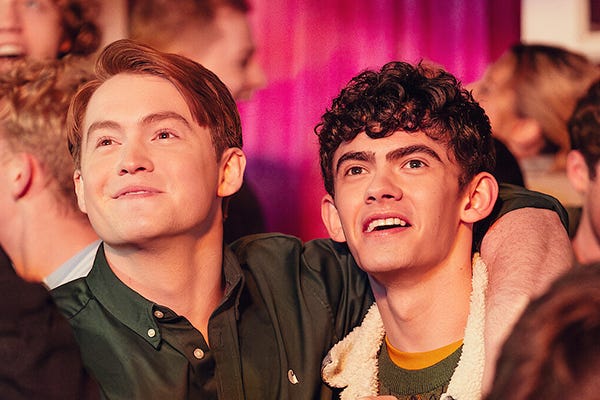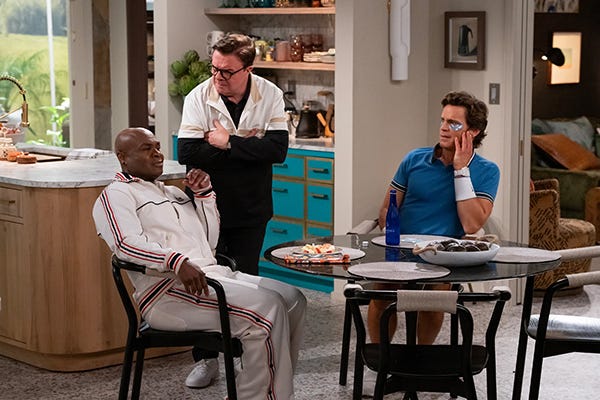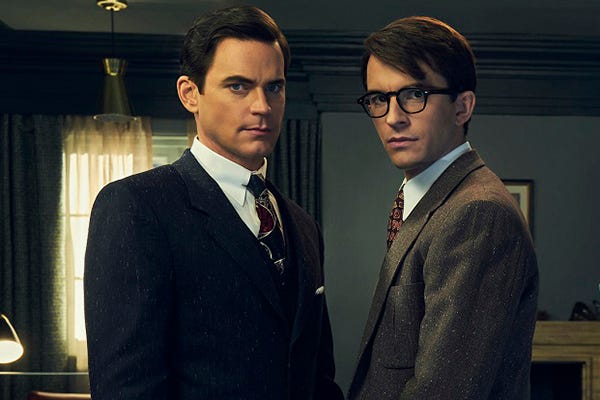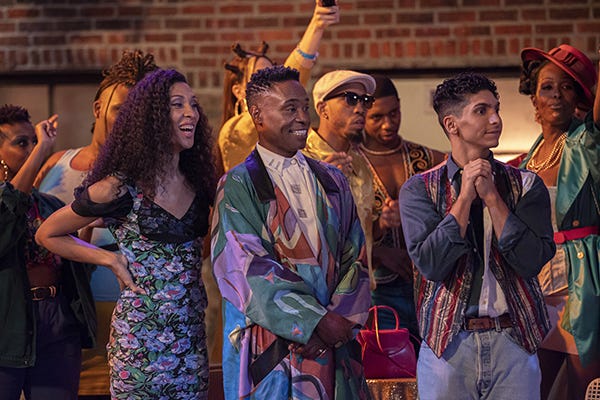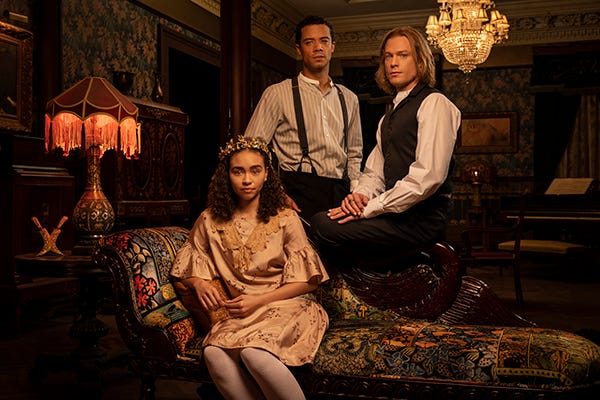Modern Love, Queer Stories: The Shows Defining a New Era of Television
The new shows centering LGBTQ+ characters and stories
Will & Grace, The L Word, Ellen…TV in the 1990s and 2000s wasn’t devoid of LGBTQ stories and identifying characters. But, they were few and far between and almost always, sexuality was the core trait of a character or a major plot point. These shows were groundbreaking because they dared to tell queer stories, and therefore wildly impactful on pop culture. But over the last few decades, queer stories on TV have evolved to encompass gender and sexual fluidity, complex character development, and a range of storylines that don’t just center someone’s sexuality. These modern shows are sophisticated in that they offer a range of experiences depicted onscreen rather than settling for stereotypes and incomplete representation. We put together a list of our favorite recent TV shows featuring LGBTQ storylines; we’d love to hear yours in the comments!
Overcompensating (Prime Video)
This series, released in May 2025, is already a hit with fans who can’t wait for a second season. The show was created by and stars comedian Benito Skinner, known for his online persona Benny Drama. Benito made a name for himself creating content for YouTube, Instagram, and TikTok, and Overcompensating grew out of a live comedy show he wrote based on his own college experience. The TV show follows Benny, a former high school jock who, upon getting to college, cannot ignore the fact that he is gay. As he navigates a new home away from home, he meets Carmen, a classmate who becomes his closest confidante. A story about love for friends as much as it is an exploration of one’s sexuality, Overcompensating is equal parts hilarious and full of heart. Plus, there are some fantastic cameos by the likes of queer icons Megan Fox, Matt Rogers, Bowen Yang, and an out-of-control diva Charli XCX (who also co-executive produced the series).
Heartstopper (Netflix)
Created by Alice Oseman, who wrote the graphic novel series of the same name, Heartstopper is a British coming-of-age drama about two teen boys and their friends, who find love, friendship, and authentic connection in a confusing time. The show offers heartfelt and authentic queer representation, focusing on the blossoming romance between Charlie, a shy, awkward, gay teenager, and Nick, a popular rugby player discovering his bisexuality. The show is a swoonworthy watch, and offers a tender, optimistic portrayal of LGBTQ+ youth. The show depicts first love, the anxieties around coming out, and self-acceptance with warmth and sensitivity. Beyond the central couple, Heartstopper includes a diverse range of queer characters—trans, lesbian, and asexual teens—whose stories are treated with equal care and visibility. Its inclusive narrative challenges stereotypes and creates a safe, affirming space for queer audiences, especially younger viewers seeking joyful, relatable representation.
Mid-Century Modern (Hulu)
A classic sitcom with a modern twist, Mid-Century Modern premiered in March 2025 and comes from the creators of Will & Grace. The show features stars of stage and screen Nathan Lane, Matt Bomer, and Nathan Lee Graham, as well as the late Linda Lavin who passed away during the filming of the first season. Life imitates art, as the series itself begins with a beloved’s passing. After the death of one of their best friends, the remaining three members of a friend group decide to move in together. All gay men and living with their wealthiest friend’s mother, it’s got a Golden Girls vibe. The show celebrates chosen family, especially in one’s later years, and its classic premise with a progressive spin is what makes it special. Instead of having gay characters amongst straight leads, it’s fully enmeshed in gay culture and issues.
Harlem (Prime Video)
The show Harlem features vibrant and nuanced queer representation as part of its ensemble of dynamic Black women navigating love, careers, and identity in New York City. One of the main characters, Tye, is a successful tech entrepreneur who is proudly queer and masculine-presenting, offering visibility to a demographic often underrepresented in mainstream media. Her storyline explores not only romance and hookups but also deeper themes like internalized bias, health care discrimination, and the complexities of queer identity within the Black community. Harlem treats Tye’s queerness as integral but not limiting, portraying it with humor, depth, and authenticity.
Fellow Travelers (Paramount Plus)
Fellow Travelers delivers a bold and deeply emotional exploration of queer history, centering the intense, decades‑spanning romance between Hawkins “Hawk” Fuller and Timothy “Tim” Laughlin against the backdrop of McCarthyism, the Vietnam protests, Stonewall, and the AIDS crisis. The series stands out for its unapologetic depiction of gay intimacy—not as titillation, but as a narrative force that underscores power, desire, and rebellion. Hawk and Tim are portrayed as authentic individuals grappling with internalized homophobia, societal expectations, and moral ambiguity. While the show notably expands representation by including characters like Marcus and Frankie—highlighting the layered experiences of Black queer men—their arcs receive less development than the central couple, pointing to both progress and ongoing gaps in queer storytelling. The show deftly combines political history with personal passion, offering both a history lesson and an unapologetically queer love story.
Pose (FX)
Pose revolutionized queer representation on television by centering the lives of Black and Latinx trans women and queer people within New York City's ballroom scene of the 1980s and early '90s. While RuPaul’s Drag Race brought drag culture to a mainstream audience, Pose is a window into ball culture’s origins. The show made history with its groundbreaking cast, featuring the largest number of trans actors in series regular roles. It authentically portrays the struggles and joys of chosen family, gender identity, HIV/AIDS, racism, and poverty, all through a lens of resilience and glamour. Pose doesn’t just include queer characters—it puts them at the heart of the narrative, celebrating their stories with dignity, complexity, and unapologetic pride.
Interview with the Vampire (AMC)
Anne Rice’s Interview With the Vampire and its 1994 film adaptation is iconic. The Interview with the Vampire TV series delves directly into unapologetic queer representation by fully embracing the homoerotic subtext of Anne Rice’s original novel and insinuations in the film, and being explicit about it. The central relationship between Louis, portrayed as an affluent Black man in 1910s New Orleans, and Lestat, a white, wealthy nobleman, is depicted as a passionate, toxic, and deeply intimate romance. Louis faces relatable challenges regarding his race and sexuality in the time and place of the series, which adds levity to the narrative. Unlike past adaptations, the series presents complex, emotionally raw portrayals of queer love and dysfunction. By weaving queerness into both the narrative and aesthetic of the show, Interview with the Vampire reclaims the gothic vampire genre as fertile ground for queer storytelling.
Want more? Our Discord is where you’ll find everything you need to know about our fandom-forward ecosystem at Remarkist! Don’t forget to follow us on Instagram, tumblr, and Spotify for more storyworld content—and hit that subscribe button so you never miss a thing at rmrk*st Mag!




